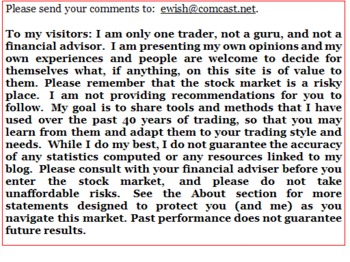The GMI is at 4+ as the number of new highs has climbed above 100 (136) and the IBD Growth Mutual Fund Index is now above its 50 day average. Even though this rally looks weak and untimely, the train has left the station. I am accumulating QLD and other growth stocks.
 Dr. Wish
Dr. Wish
GMI: 1+; GMI-R: 4+; Indicators improving, tradeable rally?
This is the rally that I just love to resist. The GMI is back to 1+ and the GMI-R to 4+, still well below the levels I like to see to go long. The QQQQ is underperforming the SPY and the DIA. The QQQQ is in the 18th day of its short term down-trend. But a lot of the leaders are rising and all of the indexes I follow have bullish MACD daily crossovers. The Worden T2108 is back to 34% and now above its 30 day average. I am beginning to think this is a tradeable rally. But I don’t trust it to last. Still, I am wading in on the long side and setting close stops.
GMI: 2; GMI-R: 4 Stand-off continues
The GMI rose one to 2 and the GMI-R to 4. There were many new lows on Tuesday, 226, in my universe of 4,000 stocks. There were only 48 new highs. RIMM continued to decline, but GOOG and AAPL held up. Tuesday was the 17th day of the current QQQQ down-trend. The Worden T2108 is at 26%. The stand-off between bulls and bears continues and I am content to watch from the sidelines.
